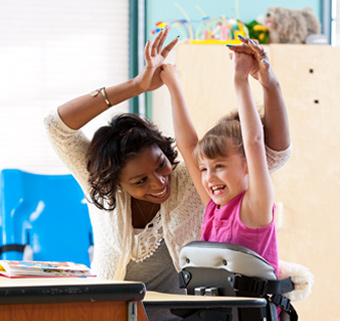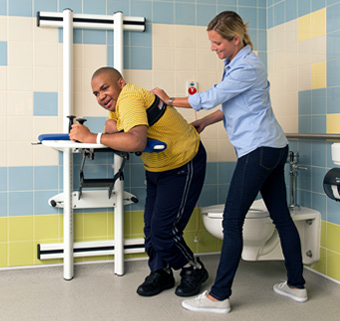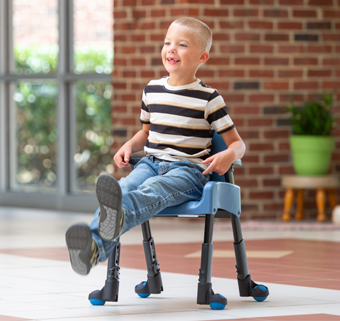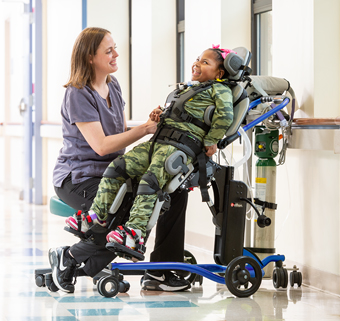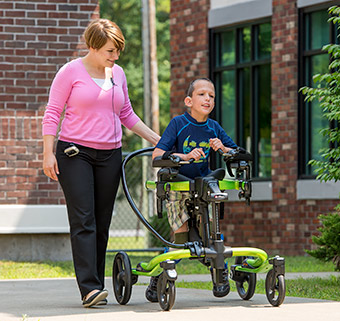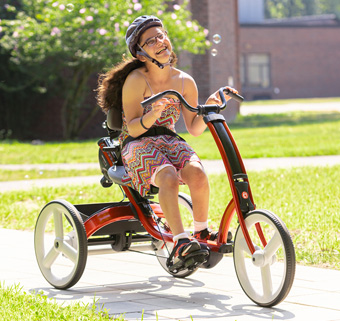Part 2: What Is Goal Attainment Scaling?
| August 2020 Goal Attainment Scaling (GAS) is a client-centric, criterion referenced measure of progress, responsive to minimally significant changes in a specific outcome, whether it be an individual goal or a functional goal. GAS goals can be written for any aspect of the International Classification of Function (ICF).1 GAS can capture functional and meaningful progress in a client where a standardized measure may not.2, 3, 4
Goal Attainment Scaling (GAS) is a client-centric, criterion referenced measure of progress, responsive to minimally significant changes in a specific outcome, whether it be an individual goal or a functional goal. GAS goals can be written for any aspect of the International Classification of Function (ICF).1 GAS can capture functional and meaningful progress in a client where a standardized measure may not.2, 3, 4
GAS can be written for any client functional level, and is feasible and affordable.5, 6 GAS has demonstrated content validity and inter- and intra-rater reliability.7, 8, 0, 10, 11 GAS has also shown responsiveness to children with cerebral palsy, motor delays and other developmental conditions, and has proven to be more responsive to functional changes than standardized measures.2, 3, 4
GAS is meant to be done collaboratively with the family (or IEP team and student if able) and should meet six requirements: it must be relevant, understandable, attainable, time limited, behavioral and observable.
Creating goals using the International Classification of Function (ICF) is recommended in order to promote the specificity of the goal.1 GAS procedures involve identifying a unique set of goals for a client and a range of possible outcomes for each goal during the intervention time period, based on the following five levels:
- -2, which is the baseline level and what will occur if the intervention does not facilitate change
- -1, being a less than expected change
- 0, being the goal (or what is expected with intervention)
- +1, being the client achieved more than expected given the intervention
- +2, being the client achieved much more than expected given the intervention
These levels should be based on student observation, interviews of relevant stakeholders and/or assessments. The intervals between levels should be clinically significant and written in the present tense.
For measurability, criteria for monitoring progress should have one variable that demonstrates equal intervals across an ICF level that is used; repetitions, time (duration or frequency), distance and/or assistance are examples. Levels -1 and/or -2 can be used to measure regression, typically for a student with a degenerative condition.
King et al. (2000)12 indicated GAS may be particularly useful for children with low cognitive functioning, as standardized measures may not be sensitive to small incremental changes meaningful to that particular child. Other benefits of GAS include better potential for therapists to clarify their therapy objectives and to conceptualize and deliver therapy intervention, and improved client satisfaction.
The GAS Training Manual by McDougall and King (2007)13 recommends three goals for each client. GAS allows for scoring multiple goals by providing an aggregate measure of change for the client using a T-score with a mean equal to 50 and a standard deviation of 10.3 T-score manual calculation being laborious, the GOALed App, available for iPhone and Android, has been developed by a physical therapist. It is a user-friendly app that can quickly calculate the T-score of GAS goals.1
The GAS manual written by McDougall and King10 provides further instruction on GAS procedures, including checklists for GAS content (Appendix C), training and potential challenges.
See Part 1: Why Goal Attainment Scaling? and Part 3: The Application of GAS to the IEP Process.
References
- Gaffney., E., Gaffney, K., Bartleson, L., & Dodds., C. (2019) Goal Attainment Scaling Made Easy with An App: GoalEd. Pediatric Physical Therapy. 31(2): 225-230. Available at: Goal Attainment Scaling Made Easy With an App: GOALed
- McDougall J, Wright V. (2009) The ICF-CY and Goal Attainment Scaling: Benefits of their combined use for pediatric practice. Disability and Rehabilitation 31(16):1362-1372. Abstract The ICF-CY and Goal Attainment Scaling: benefits of their combined use for pediatric practice
- Brown, D., Effgen, S. & Palisano, R. (1998). Performance Following Ability-Focused Physical Therapy Intervention with Individuals with Severely Limited Physical and Cognitive Abilities. Physical Therapy. 78(9):934-947. Free Full Text Performance Following Ability-Focused Physical Therapy Intervention in Individuals With Severely Limited Physical and Cognitive Abilities
- Steenbeek, D, Gorter, J.W., Ketelaar M, Galama, K., & Lindeman, E. (2011) Responsiveness of Goal Attainment Scaling in Comparison to Two Standardized Measures in Outcome Evaluation of Children With Cerebral Palsy. Clinical Rehabilitation. 25(12):1128-1139. Free Full Text Responsiveness of Goal Attainment Scaling in comparison to two standardized measures in outcome evaluation of children with cerebral palsy
- Chiarello L.A., et al. (2016) Student Outcomes of School-based Physical Therapy as Measured by Goal Attainment Scaling. Pediatric PT 28(3):277-284. Free Full Text Student Outcomes of School-Based Physical Therapy as Measured by Goal Attainment Scaling
- Effgen, S.K., McCoy, S.W., Chiarello, L.A., Jeffries, L.M., & Bush, H. (2016). Physical Therapy-Related Child Outcomes in School: An Example of Practice-Based Evidence Methodology. Pediatric Physical Therapy. 28 (1):47-56. Free Full Text Physical Therapy-Related Child Outcomes in School
- Palisano, R.J., Haley, S.M., & Brown, D.A. (1992). Goal attainment scaling as a measure of change in infants with motor delays. Physical Therapy. 72(6):432-437. Free Full Text Goal Attainment Scaling as a Measure of Change in Infants with Motor Delays
- Palisano, R.J. (1993) Validity of Goal Attainment Scaling in Infants With Motor Delays. Physical Therapy, 73(10):651-658. Abstract Validity of goal attainment scaling in infants with motor delays
- Law, S., Oi-Sheung Dai, M., & Siu, A.M.H. (2004) Applicability of Goal Attainment Scaling in the Evaluation of Gross Motor Changes in Children with Cerebral Palsy. Hong Kong Physiotherapy Journal. 22(1):22-28. Free Full Text Applicability of Goal Attainment Scaling in the Evaluation of Gross Motor Changes in Children with Cerebral Palsy
- Steenbeek, D., Ketelaar, M., Galama, K., & Gorter J.W. (2007) Goal attainment scaling in paediatric rehabilitation: a critical review of the literature. (2007) Developmental Medicine and Child Neurology. 49(7):550-556. Free Full Text Goal attainment scaling in paediatric rehabilitation: a critical review of the literature
- Steenbeek D., Ketelaar M., Lindeman E., Galama K., & Gorter, J.W. (2010) Interrater Reliability of Goal Attainment Scaling in Rehabilitation of Children With Cerebral Palsy. Arch Phys Med Rehabil. 91(3):429-435. Free Full Text Interrater Reliability of Goal Attainment Scaling in Rehabilitation of Children With Cerebral Palsy
- King, G., McDougall., Palisano, R., Gritzen, J., & Tucker, M. (2000) Goal Attainment Scaling: Its use in Evaluating Pediatric Therapy Programs. Physical and Occupational Therapy in Pediatrics. 19(2):31-52. Free Full Text Goal Attainment Scaling Its Use in Evaluating Pediatric Therapy Programs
- McDougall, J., & King, G. (2007) Goal Attainment Scaling: Description, Application and Utility in Pediatric Therapy Services. 2nd Edition. Thames Valley Children Services. Available at: Goal Attainment Scaling: Description, Utility, and Applications in Pediatric Therapy Services

